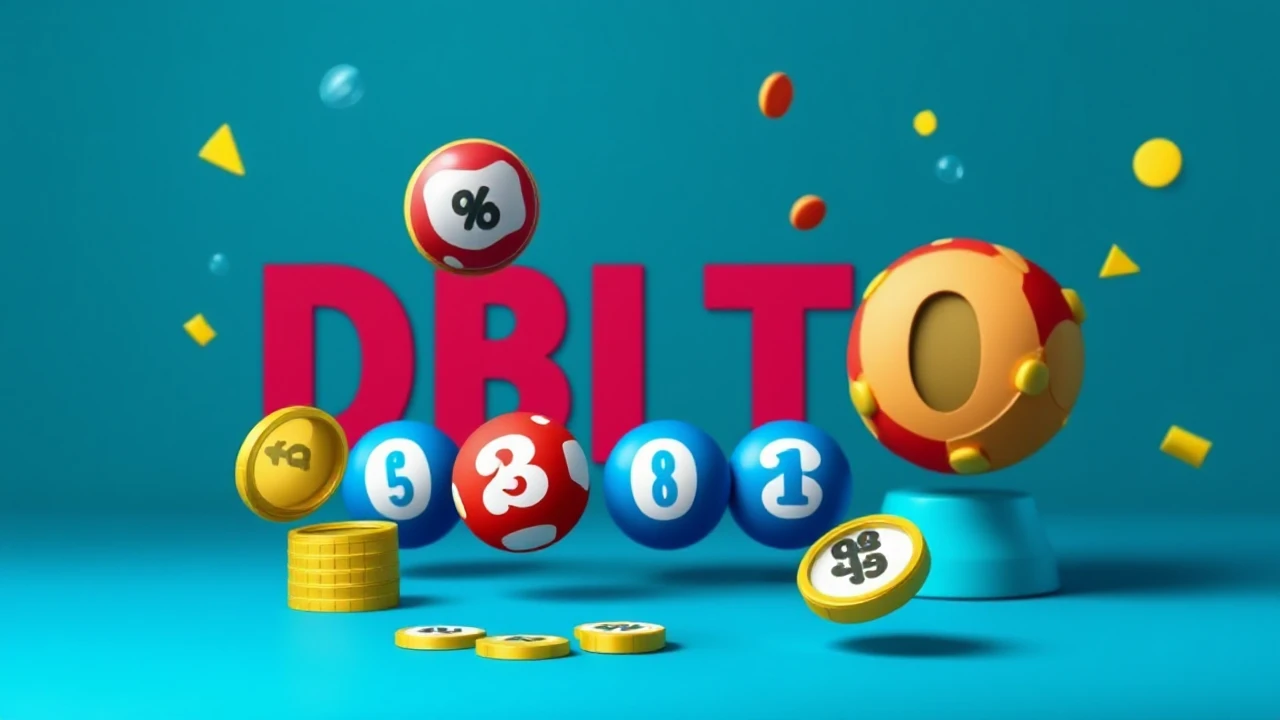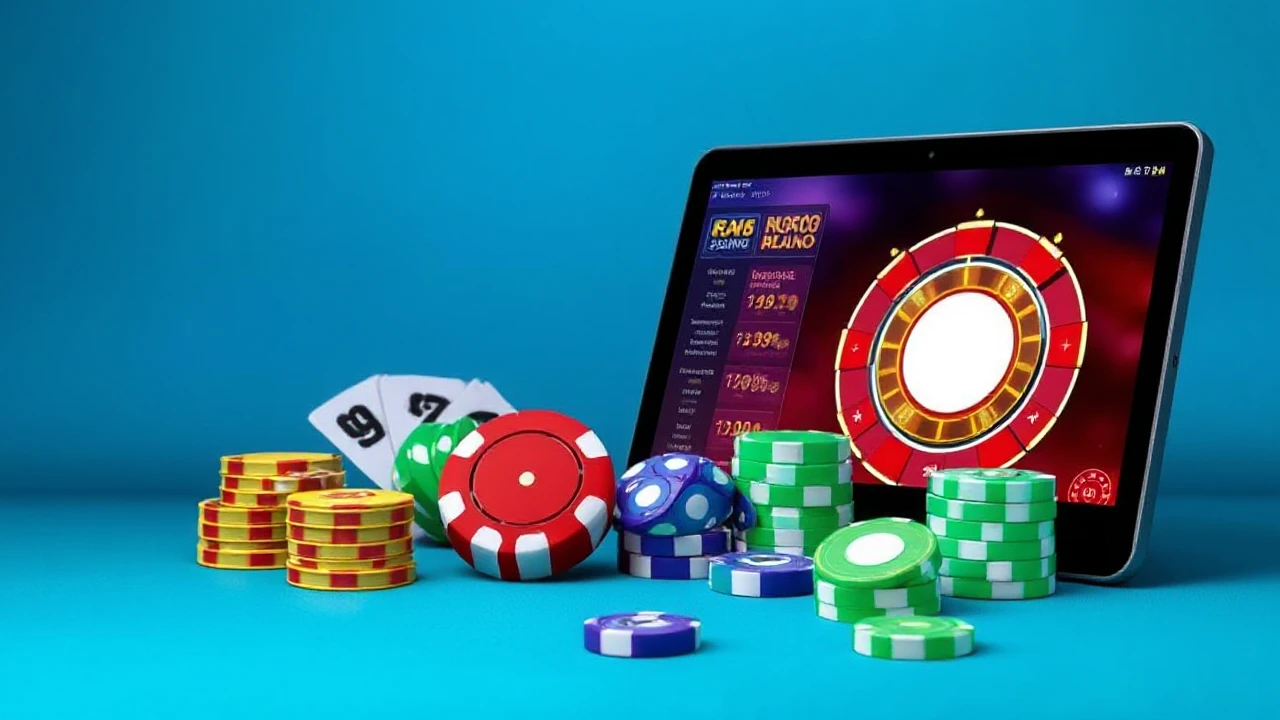

Others
Rtp live, panduan memilih game slot di Indoplaybet link alternatif login

Dennis Brown
15 Sep 2025

Lifestyle
Exploring the Magic of PDRN Cream: Your Guide to Revolutionary Skincare
By Dennis Brown
15 Sep 2025
 Tech
Tech
Discovering the Next Generation of Trading: A Deep Dive into NordFX WikiFX's Innovative Features
By Dennis Brown
15 Sep 2025
 Health
Health
Upgrade Your Style: 5 Must-Try Diademas Hairstyles to Lift Your Look
By Dennis Brown
15 Sep 2025
Today's Top Highlights



Perfecting the Technique of Timing in Online Gaming House Slot Play: Approaches for Success
 By Dennis Brown
•
14 Sep 2025
By Dennis Brown
•
14 Sep 2025

Nailing the Skill of Timing in Online Casino Slot Gaming: Strategies for Success
 By Dennis Brown
•
14 Sep 2025
By Dennis Brown
•
14 Sep 2025

Delving into the Mindset of Internet Casino Slot Gameplay: The Deep Dive
 By Dennis Brown
•
14 Sep 2025
By Dennis Brown
•
14 Sep 2025

Unveiling the Psychology of Internet Casino Slot Gameplay: The Deep Dive
 By Dennis Brown
•
14 Sep 2025
By Dennis Brown
•
14 Sep 2025






September 2025 Blog Roll
- slot gacor
- ku88
- Lu88
- May88
- Max88
- UK88
- okfun.com
- https://vmax.onl/
- nhà cái u888
- Kubet
- online casinos
- 789P
- https://nohutm.com
- HZ88
- HM88
- AF88
- 888NEW
- EU9
- 89BET
- 68WIN
- GO99
- TV88
- NOHU90
- XN88
- go8
- GO8
- GO99
- https://lode88.sa.com/
- https://lu88k.com/
- https://nbet.shoes/
- https://max88a.com/
- https://uk88.sa.com/
- xo88
- tx88
- https://okwin.casa/
- https://5mb.day/
- EV88
- wettanbieter ohne oasis
- meilleur casino en ligne France
- https://lode88.de/
- https://789f.fan/
- Nhà cái uy tín
- kubet77
- kèo bóng đá
- casinos not on gamstop
- nổ hũ
- online spielothek
- casino spiele kostenlos spielen ohne anmeldung
- https://79sodo.biz/
- gamstop
- online casino
- https://lc88comm.com/
- GEM88
- Fb88
- w88
- w88
- MM88
- slot 1000
- nanastoto
- https://du88v.net/
- Five88
- https://5mb.icu/
- https://5mb.gg/
- https://5mb.io/
- https://5mb.es/
- casino online deutschland
- https://5mb.onl/
- 78 win
- iwin
- rikvip
- rikvip
- bk8
- bk8
- 8xbet
- gem88
- gem88
- Nhà cái oxbet
- online slots deutschland
- besten wettanbieter österreich
- QQ88
- LUCK8
- kkwin. com
- https://kuwinn.app
- https://agenzona66.com/
- okwin
- best canadian online casino
- canada online casinos
- top online casinos in Canada
- best online casinos canada
- online casinos in canada
- Miso88e.org
- https://tg88.tech/
- go8
- vuabet88
- E2BET
- E2BET
- E2BET
- canadian online casino
- New88
- New88
- teko4d
- https://q789win.vip/
- https://hm88.actor/
- https://88aa.golf/
- Sunwin
- gk88t2.com
- https://fsbet.net/
- https://tx885.com/
- https://da88q.net/
- https://lucky88b.net/
- https://sky88us.com/
- Lương sơn TV
- https://zona66.cam/
- Leo88
- casinos online
- lương sơn tv
- lương sơn tv
- OLE777
- xlbola login
- https://luongson117.tv/
- lương sơn tv
- ai88
- RR88
- https://lt88.video/
- i9bet
- 69VN
- u888
- slot gacor
- https://abc8uk.com/
- https://9bet.bingo/
- meilleur casino en ligne
- TIP88
- https://68winss.com/
- slot
- 789 win
- aplikasi slot online
- QQ88 COM
- https://nhacaiuytinvl.com/
- sis4d
- mmoo
August 2025 Blog Roll
- hamtoto
- SV368
- link alternatif api66
- jacpot mega888
- j88
- login gacor88
- link Aloha4d
- https://shbet.vin/
- beta138
- slot gacor
- OK9
- spotlightstories
- ponderpost
- best casino apps
- chroniclecast
- Lương sơn TV
- kèo nhà cái bet88
- slot pragmatic play
- เว็บสล็อตตรง
- slot online terbesar
- xx88.bike
- qq88 okvip
- Tx 88
- https://99win.cash/
- SV368
- 89bet
- LUCK8
- 23win
- 32win
- hi88.biz
- hm88
- akun pro monaco
- 9bet
- OKWIN
- https://58win.watch/
- okwin.com
- slot gacor
- bet88
- u888
- casino en ligne France
- 58WIN
- XX88
- KJC
- eslot
- wps官网
- E2BET
- reportrally
- deneme bonusu veren siteler
- XX88
- Debet
- Bkk win
- www.thecitycentre.london
- dunia108
- bk88
- TK88
- 100vip
- website slot gacor
- mm88
- sabung ayam online
- https://pg88vn.lat/
- 79king
- 23win
- hi88
- Slot Online
- Slot
- slot88
- Kubet casino
- King88
- u888
- Kubet
- 789bet
- https://bk8win.io/
- TG88
- LUCK8
- Thabet
- api88 login
- QQ88 COM
- qh88
- ai meta hack
- 8XBET
- Nohu
- DA88
- situs togel
- オンラインカジノ おすすめ 最新情報
- SV368
- trendtimes
- ai88bet
- naga508
- https://mm88.gold/
- https://kreativekustoms.net/
- 32win
- https://km88.monster/
- mantap555
- Lương sơn TV
- https://rr88.build/
- slot
- หวยออนไลน์
- romabet giriş
- kutu4d
- 33win
- https://f8bet-vn.com/
- u888.com
- สล็อต
- BONG88
- best online casinos canada
- f8bet
- 23win
- bigdewa
- XX88
- BẮN CÁ ĐỔI THƯỞNG
- 123win
- https://fb88j.com/
- rr88
- https://xx88.asia/
- les casinos en ligne fiables ici
- betvnd
- data macau
- https://32winse.com/
- xoso66
- ok365
- Lương sơn TV
- okwin
- situs slot gacor
- KeoNhaCai
- 8kbet
- nhà cái 789p
- 789F
- https://23win.cab/
- creditcard casino
- TD88
- awareagenda
- tdtc
- mm88
- MM88
- https://83067.org/
- Bet88
- F8BET
- https://uu88.page/
- MM88
- TD88
- best sports betting sites dubai
- vividvibes
- bay789
- best online casinos dubai
- RR88
- zbahis
- slot nexus
- kjc website
- slot okesultan
- slot online
- Ok365
- Hello88
- candu123
- doyan5
- OK9
- https://58win79.com/
- best online sports betting singapore
- https://88clbbb.com/
- 78WIN
- casino utan spelpaus
- five88
- https://mm88.design/
- https://www.emprendeimperio.com/
- SBOTOP
- https://u8888one.baby/
- E2BET
- hi88o.com
- https://sunwinners.com/
- 58WIN
- da88
- slot online
- M88
- ABC8
- fo88
- Demo Slot PG
- UU88
- casino utan spelpaus
- 실시간카지노사이트
- MM88
- bet88
- RR88
- https://kuwin.house/
- https://bet88vn.london
- E2bet Rentals
- pg88 game
- https://68xbet.net/
- siaran99
- slot gacor
- abc8
- gacorbet88
- Nhà cái uy tín
- Bandar Togel
- okking
- meilleur casino en ligne France
- bong88
- ZEUS007
- 98WIN
- slot777
- binjaitoto
- berita138
- 13WIN
- Lucky88
- SITUSWIN
- https://keonhacaitv.net
- slot gacor 777
- J88
- Fb88
- ww88
- 789WIN
- mpo slot
- kuwin
- http://83067.org/
- https://acuraclientracing.net/
- gk88
- Hi88com.biz
- SV88
- truthtribune
- ok9
- 98win com
- deneme bonusu
- 789WIN
- miso88
- https://sv3688.live/
- แทงหวย
- koinvegas
- https://du88.us.com/
- https://i9bet.locker/
- สล็อต 789
- https://bet8803.net/
- F168
- xo88
- เว็บสล็อต
- cemeslot
- Sawer4d
- 33win
- mpo777
- https://okwin.care/
- https://bet88zb.com/
- lương sơn tv
- Nhà cái xx88
- kèo nhà cái
- MM88
- U888
- trendtalk
- Miso88
- KUWIN
- lode88
- qq88 okvip
- mantap 555
- xin88
- PG99
- slot scatter hitam
- https://k8cc.faith/
- hb88
- upinslot
- https://79kingi.com/
- w69
- dewacash
- XX88
- OK9
- https://23wincom.tv/
- kangtoto
- สล็อต168
- 789win
- five88
- 33winae.com
- nhà cái uy tín
- OK9
- hi88
- akun pro singapore
- 88bet
- xx88
- tỷ lệ kèo nhà cái
- GA179
- https://vnd77-viet.com/
- slot online
- https://13win.money/
- lxtoto
- https://789win1.live/
- 23win
- 8XX
- https://www.ku11.boo/
- 789win
- slot gacor subuh ini
- https://dola789.events/
- văn khánh tv
- https://32win.dev/
- 789win
- doyan5
- XX88
- dunia777
- Ku win
- SV368
- okwin
- slot dana
- BJ88
- OK9
- pg99
- https://king88.international/
- Operabola
- situs togel
- J88 casino
- doyan5
- best online casino sites singapore
- ww88
- mbak4d
- ww88
- 58win
- F168VIP
- https://www.addictologie.org/
- slot77
- skor88
- mindmingle
- AMARTOTO
- vin88
- pg99.com
- https://789win.market/
- NỔ HŨ
- SLOT GACOR
- win55
- CWIN
- Demo Slot
- neng4d
- https://linklist.bio/goltogel
- insightavenue
- ww 88
- bang vape
- slot777
- https://ggwin.movie/
- ok9
- crypto casinos
- u888 casino
- slot gacor
- abc88
- slot88
- https://ok365vn.dev
- OKWIN TV
- domtoto
- https://nohu.locker/
- arena tempur slot
- cwin
- Cwin
- https://kkwin.tech/
- okwin
- QQ88
- pg88
- https://nftp.muet.edu.pk/
- xx88 casino
- Nohu90
- QQ88
- XX88
- XX88
- best crypto casinos
- 33win
- gk88
- KUBET
- https://bj88bj88.com/
- GK88
July 2025 Blog Roll
- layaktoto
- 13win
- https://shbet28.com/
- J88
- quirkquest
- vipwin
- dang ky m88
- td88
- aslotre
- ufabet
- MM88
- Hit77
- jayaslot
- Trang game giải trí
- Akun Pro Rusia
- ww88
- https://oxbet.channel/
- 58WIN
- https://kubet3377.com/
- เว็บสล็อต
- สล็อต
- 8kbet
- https://pg88vn.my/
- 69vn
- toto macau
- telegram 下载
- 79king
- สล็อต
- https://fb88.nexus/
- mbak4d
- 789P
- lucky88
- 搜狗输入法下载
- Udangbet
- sigapbet
- https://pg88vn.tokyo/
- bandar slot online
- 69VN
- E2BET
- Aparthotel.com
- u888
- poker88
- dinasti555
- Dakrenovatie
- slot demo
- pulseponderings
- https://j88play.com/
- https://33win.bingo/
- OK9
- reflectrealm
- jkbet88
- j88
- pg99
- https://lode888s.com/
- 8KBet
- https://may8899.com/
- RR88
- wingslots77
- 58WIN
- alo789
- ok365
- https://9ae888.com/
- quillquest
- batik55
- BET88
- luminarylife
- https://11bett.one/
- kangjitu
- rr88
- uus777
- TX88
- https://ax88.store/
- 슬롯사이트
- U888
- japritoto togel
- https://tx88.help/
- informedinsight
- 33WIN
- akun pro hongkong
- 69VN
- rr88
- 69vn
- ufa350
- klikfifa
- cpc2888
- ยูฟ่าแคม
- INDO0877
- https://king88.giving/
- Metal Promotion Greece
- shbet
- https://lucky8822.com/
- 99OK
- Ufabet
- 33 win
- https://ok9us.com/
- Bandar Togel
- 23 bet
- kubet
- 789club
- 69vn nhận 169k
- Ty le keo
- 88CLB
- link Aloha4d
- onbet
- 69VN
- 9bet
- HB88
- 69vn
- MM88
- insightink
- VMAX
- newsnexus
- 8kbet
- Da88
- slot oke sultan
- mdgwin
- epochechoes
- remipoker
- slot gacor
- slot88
- fastest paying crypto casino
- togel
- ufabet
- kointoto
- 88BET
- https://nhacaiuytin.tips/
- BET88
- toto slot
- porno grafi terbaru
- Fun88
- https://mm88.build/
- https://kubett.diy/
- สล็อตเว็บตรง
- dinasti555
- ufabet เว็บตรง
- situs toto
- KING88
- J88
- ALO789
- 88clb
- 23WIN
- slot qris
- kutu4d
- https://ax88xx.com/
- King88
- lucky88
- beste online casino zonder cruks
- hi88
- https://k8cc.energy/
- link Aloha4d
- i9bet
- https://bet88vv.org/
- https://lode88.at/
- https://qq88pro.vip/
- betclub89
- kuwin
- BJ88
- Kubet
- Velo Folding Electric Bike Fold 1
- https://pg88vn.pro/
- สล็อต666
- zenostogel
- xổ số shbet
- https://188betgame1.com/
- สล็อต888
- 8kbet
- nexusnotes
- suncity
- insightinquirer
- XX88
- 69VN COM
- deneme bonusu veren siteler
- bong88
- J88
- 789win
- https://lu88.homes/
- SV388 Casino
- bandar togel
- bet88
- wanderwords
- rr88
- dewahub
- v9bet
- 32win
- https://77wina1.com/
- kí tự đặc biệt
- nohu
- https://bet68gamebai.com/
- lsm99
- TK88
- Singapore casino sites
- https://79kingg.me/
- ALO789
- tisu4d
- cpc2888
- https://agbatalha.pt/aeb/
- bj88
- fake flight ticket
- VankhanhTV
- MB66
- kubet pizza
- currentcrux
- freshfeed
- nhà cái uy tín
- Udangbet
- GA888
- สล็อตเว็บตรง
- kubet88
- kingbet188
- สล็อตเว็บตรง
- w88
- Situs Slot
- https://da8811.com/
- https://69vnk6ai.com/
- blendbuzz
- XX88
- 7m
- slot pulsa
- https://sonclub1.com/
- 카지노커뮤니티
- harborhaven
- 88vv
- W88
- u888
- tridewa
- u888 com
- https://8kbets.best/
- NOHU
- https://hi88uk.com/
- vs bet
- tapestrytalk
- 9bet
- jagoanspin
- 68gamebai
- Tototogel
- https://shbet63.com/
- nohu90
- da 88
- slot demo gratis
- https://33wincom.org/
- MALUKU4D
- 7meter
- situs togel
- Kubet
- 32WIN
- https://f8bet2.dev/
- PAS4D
- SLOT QRIS
- 69vn
- journeyjotter
June 2025 Blog Roll
- slot gacor
- kuwin
- 9BET
- 58win
- https://mibetc.com/
- Nhà cái uy tín
- NhaCaiUyTin
- lapak303 login
- Bet88
- 188bet
- Truyenqq
- Situs togel
- UU88
- mitra super scatter
- best VPN casino
- link gacor sip777
- https://gk88.actor/
- over under parlay
- FB88
- serendipitystories
- chicchronicles
- danaslot
- kangtoto
- spherestories
- indogg
- https://k8cc.uno/
- QQ88
- ww88
- https://xx88.ink/
- slot777
- S666
- https://e2bet-games.com/
- Jun88
- hi88
- https://pg99bz.com/
- แทงหวยออนไลน์
- currentchronicles
- areaslots
- questquill
- https://qq88.racing/
- U888
- slot
- 79KING
- New88
- Dominobet
- factfront
- sunwin
- XX88
- 6FF
- bola88
- sbobet88
- Katsu5
- nohu90
- QQ88
- airasiabet
- https://xx88.center/
- dwvgaming
- link slot jepang
- Ae888
- Abdullah Nizar assegaf
- J88
- kingjr99
- PG SLOT เว็บตรง
- https://abc8.vet
- B52 CLUB
- U888
- 블랙툰
- Bo Togel
- saobet
- https://e-aula.anestesiar.org/
- gudangbet88
- hi88
- garuda303
- 789win
- Ok9
- trực tiếp đá gà thomo
- Truyenqq
- https://www.adswindentoto.com/
- server thailand
- kentucky derby sportsbooks
- diy clipart
- dm win
- veracityvoice
- 먹튀폴리스
- tahun4d
- https://shbet45.com/
- Kubet
- DU88
- สล็อตเว็บตรง
- slot gacor
- F168
- NAGAHOKI303
- https://bet88vn.in/
- 789p
- KUBET
- https://28betjp.com/
- Neng4d
- kèo nhà cái
- golbos
- 555win
- kubet
- slot
- บาคาร่า
- u888
- https://t8kbet5.com/
- online casino greece
- BK8
- rusia777 link
- https://789wint2.com/
- evergreenechoes
- Link Scatter Hitam
- headlinehub
- 8DAY
- OKKING
- slot gacor
- https://33winf.fun/
- dewagg
- m88 cá cược trực tuyến
- หนังฝรั่ง
- https://mm88.space/
- สล็อต168
- เพิ่มยอดวิว
- claritychronicles
- 79king
- best offshore casinos
- ALO789
- 789bet
- buzzboard
- http://88clblw.com/
- BET88
- E2BET
- kuwin
- BJ88
- slot777
- QQ888
- 23win
- kartupoker login
- https://jun88uk.com/
- Thabet
- ngân hàng nông thôn
- 789p
- V9bet
- 23win
- Slot Shopeepay
- j88
- Slot gacor
- mahkota555
- 69VN
- u888
- alertatlas
- https://99ok.studio/
- https://lucky88.bike/
- https://qq8876.net/
- keo nha cai
- reportrealm
- dbltoto
- SV388
- uus777
- j88
- operabola
- 789win
- สล็อต888
- BET88
- v9bet
- https://8live3.com/
- mustikaslot
- demo slot
- panoramapress
- bet88
- 33win
- bet88
- Slot hoki
- slot gacor
- UFABET ทาง
- hb88
- sparkslate
- slot777
- MB66
- teratai888
- https://23win.domains/
- pengeluaran macau
- สล็อตเว็บตรง
- ww88
- garengongko
- okvip
- https://9betb.com/
- miso88
- BIG88
- DEWAHOKI303
- liquor importing license
- whatsapp网页版
- 78win
- kuwin
- mahkota555
- king88
- New88
- s1288poker
- bulletinbeacon
- Situs togel terpercaya
- Slot5000
- QQ88 com
- slot gacor
- BET88
- luongson tv
- diu win login
- fusionforum
- 32win
- slotsgg
- slot gacor
- nyalabet
- Slotbom77 Login
- Bet88
- tigerasia88
- 69vn
- 32win
- ae888
- lucky88
- 33win
- mantap555
Popular Post
Sponsored News
 Others
Others
Understanding the Role of Expertise in Online Casino Slot Success
 By Dennis Brown
•
13 Sep 2025
By Dennis Brown
•
13 Sep 2025
 Esports
Esports
Unraveling the Mathematics behind DBLTOTO Odds: A Comprehensive Analysis
 By Dennis Brown
•
12 Sep 2025
By Dennis Brown
•
12 Sep 2025
 Esports
Esports
Unveiling the Exciting Realm of Manitoba Online Casino Games
 By Dennis Brown
•
12 Sep 2025
By Dennis Brown
•
12 Sep 2025
 Others
Others
Delving into the Mind Factors Contributing to Internet Gaming House Machine Dependency
 By Dennis Brown
•
12 Sep 2025
By Dennis Brown
•
12 Sep 2025
 Others
Others
Exploring 10 Mind-Blowing Facts About Gaming Slot Games
 By Dennis Brown
•
12 Sep 2025
By Dennis Brown
•
12 Sep 2025
 Others
Others
Influence of Visuals and Animation in Modern Slot Game Design
 By Dennis Brown
•
12 Sep 2025
By Dennis Brown
•
12 Sep 2025
